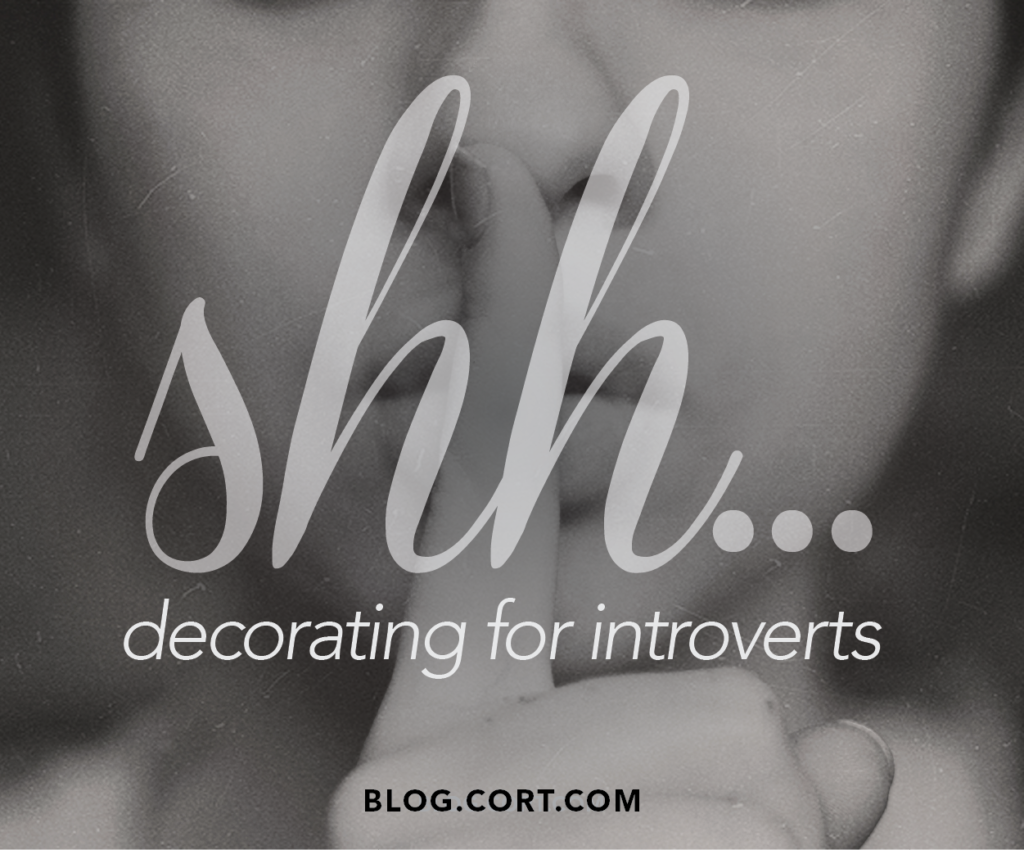If you’re an introvert, you prefer quiet to chaos, alone time to party time, solo work to group projects, and meaningful conversation to small talk. Unfortunately, your home may not support your needs. “Introverts get a bad rap, but both introverts and extroverts have their strengths,” says Dr. Toby Israel, design psychologist, consultant, and author of “Some Place Like Home: Using Design Psychology to Create Ideal Places.” An extrovert herself, she makes a specific effort to understand introverts because many families have at least one in the mix.
What would it take to create an introvert’s paradise? Dr. Israel doesn’t advocate ditching your home’s open spaces. Instead, she suggests analyzing your floorplan as it exists to determine both public and private spaces in your home, whether you live in the city, the suburbs, or a rural area. Once you identify your introvert-specific needs, you can achieve balance with a few adjustments.

Create Your Boundary
If you’re like many of Dr. Israel’s clients, you may have inadvertently mislabeled your spaces. For example, maybe you labeled a room as a study or office, but the kids barge in with constant interruptions. Without boundaries, your dedicated home office has turned into a public space. In an interview with Psychology Today, Dr. Israel says introverts think more clearly and feel more relaxed in small, intimate spaces with solid boundaries like doors. In addition to closing a door, she suggests setting strict rules with family or installing a good lock.
Create a Pocket of Refuge
“Everyone needs some private space,” says Dr. Israel, “but that’s particularly true for introverts.” If you find that spending too much time in the company of others is emotionally exhausting, it helps to know you can slip into your own private retreat to recharge. Even if it’s just a nook or cranny somewhere in (or outside) the house, turn it into a quiet, private retreat. It doesn’t have to be fancy; prop a floor pillow in a corner, use a canopy, or section off an area with a floor-to-ceiling bookshelf or a drapery. It’s possible to create tiny retreats in small apartments just as easily as large retreats in sprawling homes.
Create an Intimate Gathering Space
Although it’s a common myth that introverts are hermits, that’s not true. If you have a family, you also want to have a comfortable space to share with them. In modern homes with large, open rooms and ample square footage, Dr. Israel still sees family members retreating into their devices to find alone space, even when they are sitting together. Creating intimate seating areas within a large space is one way to come together and socialize without overwhelming the introvert who prefers making connections in quiet, cozy areas rather than in voluminous spaces.
Create a Design Strategy
Introverts typically take the time to make thoughtful decisions, and that also applies to decorating. Don’t rush your decisions on furniture and design, or you could end up disliking the space and spending little to no time in it. Furniture rental is one option that allows you to try things on for size, and CORT Furniture Rental provides a full range of furniture options to help you experiment with the décor in any space.
Dr. Israel believes that seeing your home in a different way can help you make the right design decisions. “With insight, you can create a nurturing home with meaning and soul,” she says, using words that speak volumes to introverts, “not just a cookie-cutter place.”






